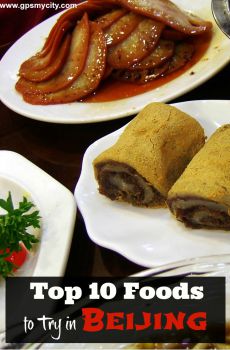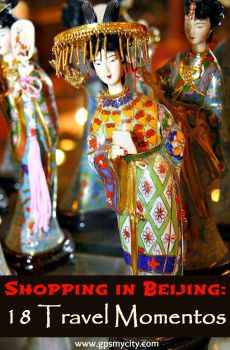National Museum of China, Beijing (must see)
Situated on the eastern flank of Beijing's Tiananmen Square, the National Museum of China serves as an educational institution dedicated to illuminating the rich tapestry of Chinese arts and history. Oversight of the museum falls under the purview of the Ministry of Culture of the People's Republic of China.
Dating back to its establishment in 2003, the museum was the result of a merger between two distinct institutions that had occupied the same architectural space since 1959: the Museum of the Chinese Revolution in the northern wing and the National Museum of Chinese History in the southern wing.
Spanning an expansive timeline from the Yuanmou Man of 1.7 million years ago to the culmination of the Qing Dynasty, the museum boasts an extensive permanent collection comprising 1,050,000 artifacts. Within this collection are numerous invaluable and singular items that are not replicated in any other museum in China or across the globe.
Prominent treasures within the confines of the National Museum of China encompass a diverse array of historical periods. These include the renowned "Simuwu Ding" from the Shang Dynasty (1600 BC - 1064 BC), holding the distinction of being the heaviest extant piece of ancient bronzeware at 833 kg. Additional remarkable pieces feature a square-shaped Shang Dynasty bronze "zun" adorned with intricately crafted sheep heads, an uncommonly inscribed bronze water pan from the Western Zhou Dynasty, a Qin Dynasty bronze tally embellished with gold inlay in the form of a tiger, opulent Han Dynasty jade burial attire adorned with golden thread, and an extensive compilation of Tang Dynasty tri-colored glazed sancai as well as Song Dynasty ceramics. Complementing these treasures is a notable numismatic collection that encompasses 15,000 coins generously contributed by Luo Bozhao.
Why You Should Visit:
The "Ancient China" exhibit on the lower floor could easily keep you busy for 2-3 hours and the quality of the works is at least comparable to the Chinese section at the Met in New York and Guimet in Paris. Additionally, you're able to see many outstanding visiting exhibitions from other parts of the world.
Tip:
Take a look at the several different sections in the information section before jumping in and decide what is most likely to appeal to you if you have only one day or a half day. Entrance is free but do take your passport/ID with you. Security is tight so expect checks both entering and leaving the museum.
Dating back to its establishment in 2003, the museum was the result of a merger between two distinct institutions that had occupied the same architectural space since 1959: the Museum of the Chinese Revolution in the northern wing and the National Museum of Chinese History in the southern wing.
Spanning an expansive timeline from the Yuanmou Man of 1.7 million years ago to the culmination of the Qing Dynasty, the museum boasts an extensive permanent collection comprising 1,050,000 artifacts. Within this collection are numerous invaluable and singular items that are not replicated in any other museum in China or across the globe.
Prominent treasures within the confines of the National Museum of China encompass a diverse array of historical periods. These include the renowned "Simuwu Ding" from the Shang Dynasty (1600 BC - 1064 BC), holding the distinction of being the heaviest extant piece of ancient bronzeware at 833 kg. Additional remarkable pieces feature a square-shaped Shang Dynasty bronze "zun" adorned with intricately crafted sheep heads, an uncommonly inscribed bronze water pan from the Western Zhou Dynasty, a Qin Dynasty bronze tally embellished with gold inlay in the form of a tiger, opulent Han Dynasty jade burial attire adorned with golden thread, and an extensive compilation of Tang Dynasty tri-colored glazed sancai as well as Song Dynasty ceramics. Complementing these treasures is a notable numismatic collection that encompasses 15,000 coins generously contributed by Luo Bozhao.
Why You Should Visit:
The "Ancient China" exhibit on the lower floor could easily keep you busy for 2-3 hours and the quality of the works is at least comparable to the Chinese section at the Met in New York and Guimet in Paris. Additionally, you're able to see many outstanding visiting exhibitions from other parts of the world.
Tip:
Take a look at the several different sections in the information section before jumping in and decide what is most likely to appeal to you if you have only one day or a half day. Entrance is free but do take your passport/ID with you. Security is tight so expect checks both entering and leaving the museum.
Want to visit this sight? Check out these Self-Guided Walking Tours in Beijing. Alternatively, you can download the mobile app "GPSmyCity: Walks in 1K+ Cities" from Apple App Store or Google Play Store. The app turns your mobile device to a personal tour guide and it works offline, so no data plan is needed when traveling abroad.
National Museum of China on Map
Sight Name: National Museum of China
Sight Location: Beijing, China (See walking tours in Beijing)
Sight Type: Museum/Gallery
Guide(s) Containing This Sight:
Sight Location: Beijing, China (See walking tours in Beijing)
Sight Type: Museum/Gallery
Guide(s) Containing This Sight:
Walking Tours in Beijing, China
Create Your Own Walk in Beijing
Creating your own self-guided walk in Beijing is easy and fun. Choose the city attractions that you want to see and a walk route map will be created just for you. You can even set your hotel as the start point of the walk.
Beijing's Historical Temples Tour II
The places of worship are some of the best links to the city's history. The unique churches, Buddhist and Taoist Temples, and beautiful Muslim Mosques all tell great tales of the history of Beijing. Despite that many of them have been partially or completely destroyed over the years either by wars or by the changes of political power, a good number of them still remain. You can visit a few... view more
Tour Duration: 1 Hour(s)
Travel Distance: 2.1 Km or 1.3 Miles
Tour Duration: 1 Hour(s)
Travel Distance: 2.1 Km or 1.3 Miles
Beijing City Center Walking Tour
A political, cultural, and economic center of China for the past eight centuries, Beijing is the newest of the country's Four Ancient Capitals.
The city boasts the grandest and best preserved imperial palaces, gardens and temples, including seven UNESCO World Heritage sites, such as the Forbidden City, Temple of Heaven, Summer Palace, Ming Tombs, Zhoukoudian, and parts of the Great Wall... view more
Tour Duration: 2 Hour(s)
Travel Distance: 3.7 Km or 2.3 Miles
The city boasts the grandest and best preserved imperial palaces, gardens and temples, including seven UNESCO World Heritage sites, such as the Forbidden City, Temple of Heaven, Summer Palace, Ming Tombs, Zhoukoudian, and parts of the Great Wall... view more
Tour Duration: 2 Hour(s)
Travel Distance: 3.7 Km or 2.3 Miles
Olympic Park Walking Tour
The Olympic Park in Beijing was built for the Olympic and Paralympic Games of 2008. This modern complex represents a contemporary architectural approach as compared to the more traditional buildings that dominate the city. Among its signature items are the iconic Bird's Nest, otherwise known as the main Olympic stadium, and the beautiful Water Cube – the Aquatics Center for water sports.
... view more
Tour Duration: 2 Hour(s)
Travel Distance: 5.6 Km or 3.5 Miles
... view more
Tour Duration: 2 Hour(s)
Travel Distance: 5.6 Km or 3.5 Miles
Beijing's Historical Temples Tour I
Chinese temples are of unique beauty and have withstood many dynasties. However because the temples have always been connected to the imperial families, many of them were destroyed when the last dynasty ended in 1911. Nevertheless, a great number of beautiful temples with great history still stand in Beijing. Take this self-guided walking tour to discover a few famous temples in the northern part... view more
Tour Duration: 1 Hour(s)
Travel Distance: 0.9 Km or 0.6 Miles
Tour Duration: 1 Hour(s)
Travel Distance: 0.9 Km or 0.6 Miles
Useful Travel Guides for Planning Your Trip
Top 10 Foods to Try in Beijing
Centuries went by and the regional Chinese, Manchurian, Mongol and Muslim cuisines boiled together to produce what's now known and loved as traditional Beijing cooking. Whenever you're in the Chinese capital, don't leave without tasting at least some of the key local meals or your...
Shopping in Beijing: 18 Travel Mementos
Today, it is safe to assume that 9 out of 10 souvenirs worldwide (regardless of the country) are made in China, the workshop of the world. But how about shopping for souvenirs in China itself and Beijing, in particular? Presented here are some of the traditional Chinese-made goods, initially...
Most Popular Desserts and Drinks in Beijing
No meal is complete without a sweet touch and a proper drink to wash it all down. Beijing's food scene is rich and colorful in many ways, and the dessert & drink areas are no exception. Some of the signature Beijing delicacies have gained popularity across Asia over the centuries, whereas...
Best Street Foods to Try in Beijing
China's passion for food – long in history as The Great Wall of China itself – is clearly manifested in its street food culture. This is particularly noticeable on the streets of Beijing, teeming with numerous vendors and thick with aromas. Whether you're a vegan, vegetarian or a...











